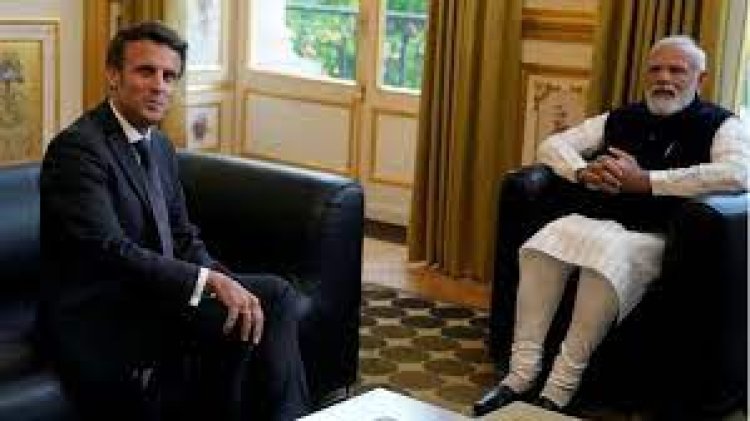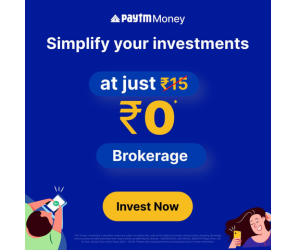Modi’s France visit to deepen India’s ties with Europe
India's Prime Minister Narendra Modi is currently in France as part of a bigger strategy to elevate Europe from the periphery to a main focus in Indian foreign policy. This comes as the conflict in Ukraine shows no signs of abating.

Prime Minister Narendra Modi's current visit to France is part of a larger plan to move Europe from the margins to a key priority in India's foreign policy, particularly as the war in Ukraine shows no signs of being contained. This may get lost in the midst of the pomp and pageantry of the Bastille Day Parade in Paris. It may not be recognised that Franco-Indian ties have gone beyond the bilateral; they are already trilateral and could soon be plurilateral, given the frenzy around "Make in India" of crucial defence equipment with French participation and agreement on large arms sales.
Perhaps the significance of the site where Modi addressed ethnic Indians was missed on his home audience, but the 109,000 strong Indian community in France was blown away by his speech. India may learn a lot from the revitalization of Ile Seguin (French for "Seguin Island"), Europe's newest multicultural arena on a continental scale, as it works to transform its cities into "smart cities" and mitigate the detrimental effects of slums and other forms of informal settlement.
Redefining Ties
Let's examine each facet of Modi's state visit in turn. First, do you think Macron can make India as important to Europe as China has been over the past two decades? After decades of close relations with Russia, Vladimir Putin's policies have severed those ties. Will this change Europe's perception of India?
Europeans were among the first to applaud India's economic reforms after the country was forced to pawn its reserve gold in 1991 and later, when finance minister Manmohan Singh unleashed a wave of liberalisation. Germany, after reunifying with the erstwhile Communist East Germany and regaining its status as Europe's most powerful country, led the way in building wider relations with India under its visionary Chancellor Helmut Kohl. New Delhi has spent many years travelling to Bonn, Frankfurt, Stuttgart, and Munich in pursuit of cutting-edge technologies, promising business relationships, lucrative investments, sound banking practises, and innovative business strategies. After that, France and the UK came in second and third, although they were still a long way behind. After ten years, when relations between the United States and India improved and the European Union adopted its Common Foreign and Security Policy (CFSP), India's ties to Europe took a second seat.
It was convenient for Europeans to take use of both Russia's inexpensive energy and China's burgeoning market at the same time. It was more challenging to confront the bureaucracy, corruption, and ingrained statist attitudes of India's post-licensing-permit raj government. The conflict in Ukraine has served as a wake-up call for Europe, teaching it that it can no longer rely on Russia for cheap oil. Europe hopes to reduce its dependency on the Chinese market in light of the lessons it has learned from Putin's Russia. Europe is now again seeing India as a potential trade partner, much as it did in the 1990s. When it comes to European options, India would like to see more variety. Despite warm words and tributes to longstanding friendships, India's links to the rest of Europe have weakened, save for the country's relationship with France.
Also Read : Final day of Utkarsh Small Finance Bank IPO | Issue purchased 18.78 times, retail portion booked 41.82 times
Stepping Stone
Modi and his host, French President Emmanuel Macron, therefore addressed how France may serve as a springboard for India's re-engagement with Europe. France will benefit from its partnership with India on the Continent. Singapore's bargaining position within the Association of Southeast Asian Nations was significantly improved when it aligned with India 30 years ago to help New Delhi reestablish its foothold in the region. The Élysée Palace has made similar preparations this week, but, as the old adage goes, the proof of the pudding is in the eating.
In July of 2022, high-ranking representatives from India, France, and the United Arab Emirates convened to discuss potential areas of trilateral collaboration in the Indo-Pacific region. After a consensus was achieved on the general parameters of such collaboration, the foreign ministers of the three countries conducted a lengthy telephone call on February 4 to discuss next steps. Foreign Secretary Vinay Kwatra met with French and UAE counterparts the next day in Paris for the second focal points conference of the now-formalized "India-France-UAE Trilateral Dialogue." This trilateral debate will now focus on maritime security, humanitarian aid and disaster relief, the blue economy, regional connectivity, multilateral forum participation, energy, food security, innovation and startups, supply chain resilience, and cultural exchange. This helps to shed some light on Modi's unexpected pre-departure declaration that he will make a stopover in Abu Dhabi en route back from Paris. There, he will update the president of the United Arab Emirates, Sheikh Mohamed bin Zayed Al Nahyan, on his discussions with French President Emmanuel Macron in the context of this trilateral engagement.
Finally, Ile Seguin's lessons for India are discussed. Renault's automotive factory on Seguin Island was demolished in 2005; it stood as a symbol of France's industrial prowess. Parisians were understandably upset by the factory's closure, therefore the local Department of Hauts-de-Seine promised to build a cultural centre that would rival any in the world. The department was awarded land for the project at a value of one euro. For its building, a public-private partnership was formed. The result of this change is the name La Seine Musicale, which literally means "The Musical Seine River." The newest symbol of European culture. When the once-proud textile mills of Mumbai fell into disuse, there was little serious debate over what to do with the resulting industrial wasteland. Only a fraction of such land has been developed into urban infrastructure. After visiting La Seine Musicale, perhaps Modi would order India's urban planners to travel to Ile Seguin to learn from the French model.
KP Nayar has extensively covered West Asia and reported from Washington as a foreign correspondent for 15 years. Views are personal, and do not represent the stand of this publication.













.jpeg?updatedAt=1700934779584)
.jpg?updatedAt=1699538803029)
.jpg?updatedAt=1699279676909)

.jpeg?updatedAt=1698938156449)

